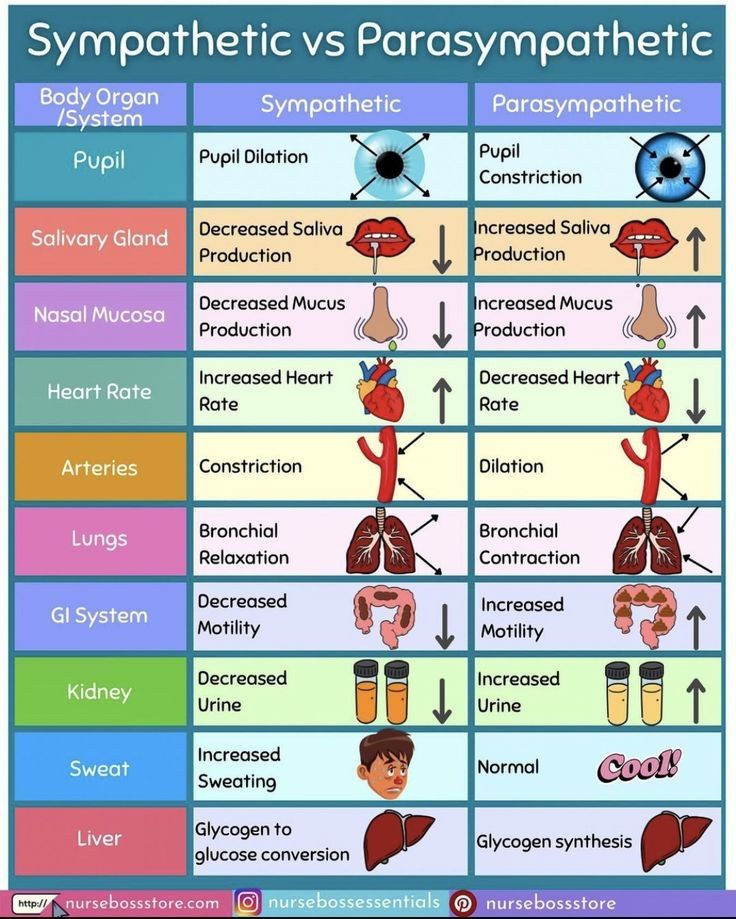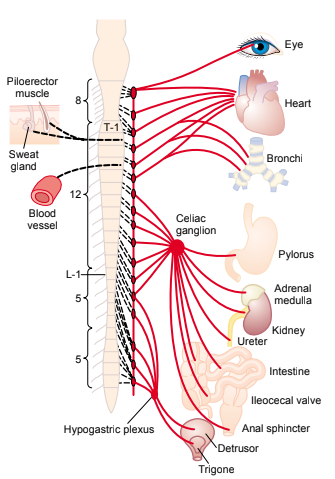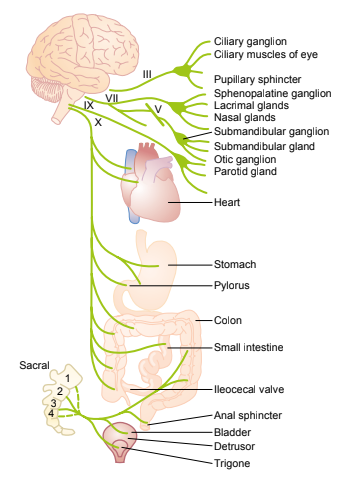Makindo Medical Notes"One small step for man, one large step for Makindo" |
|
|---|---|
| Download all this content in the Apps now Android App and Apple iPhone/Pad App | |
| MEDICAL DISCLAIMER: The contents are under continuing development and improvements and despite all efforts may contain errors of omission or fact. This is not to be used for the assessment, diagnosis, or management of patients. It should not be regarded as medical advice by healthcare workers or laypeople. It is for educational purposes only. Please adhere to your local protocols. Use the BNF for drug information. If you are unwell please seek urgent healthcare advice. If you do not accept this then please do not use the website. Makindo Ltd. |
Autonomic Nervous System
-
| About | Anaesthetics and Critical Care | Anatomy | Biochemistry | Cardiology | Clinical Cases | CompSci | Crib | Dermatology | Differentials | Drugs | ENT | Electrocardiogram | Embryology | Emergency Medicine | Endocrinology | Ethics | Foundation Doctors | Gastroenterology | General Information | General Practice | Genetics | Geriatric Medicine | Guidelines | Haematology | Hepatology | Immunology | Infectious Diseases | Infographic | Investigations | Lists | Microbiology | Miscellaneous | Nephrology | Neuroanatomy | Neurology | Nutrition | OSCE | Obstetrics Gynaecology | Oncology | Ophthalmology | Oral Medicine and Dentistry | Paediatrics | Palliative | Pathology | Pharmacology | Physiology | Procedures | Psychiatry | Radiology | Respiratory | Resuscitation | Rheumatology | Statistics and Research | Stroke | Surgery | Toxicology | Trauma and Orthopaedics | Twitter | Urology
Related Subjects: |Pulmonary Physiology |Pancreas Physiology |Renal Physiology |Pulmonary Physiology |Cardiac Anatomy and Physiology |Coronary Anatomy and Physiology |Cardiac Electrophysiology |Cardiac Embryology |Cardiac Physiology |Cardiac Physiology |Gastrointestinal tract Physiology |Autonomic Nervous System
The autonomic nervous system (ANS) regulates involuntary physiological functions, including heart rate, blood pressure, digestion, and respiratory rate. It operates subconsciously and maintains homeostasis within the body.
Actions

Key Concepts
- Divisions of the ANS :
- Sympathetic Nervous System (SNS) :
- Prepares the body for "fight or flight" responses.
- Increases heart rate, dilates airways, and inhibits digestion.
- Parasympathetic Nervous System (PNS) :
- Promotes "rest and digest" activities.
- Slows heart rate, stimulates digestion, and conserves energy.
- Enteric Nervous System (ENS) :
- Regulates gastrointestinal functions independently but can be influenced by the SNS and PNS.
- Sympathetic Nervous System (SNS) :
Sympathetic

Parasympathetic

Anatomy of the ANS
- Sympathetic Nervous System :
- Originates from the thoracic and lumbar spinal cord (T1-L2).
- Preganglionic neurons release acetylcholine (ACh) and synapse in the sympathetic ganglia.
- Postganglionic neurons release norepinephrine (NE) to target organs.
- Parasympathetic Nervous System :
- Originates from the brainstem (cranial nerves III, VII, IX, X) and sacral spinal cord (S2-S4).
- Preganglionic neurons release acetylcholine (ACh) and synapse in or near target organs.
- Postganglionic neurons also release acetylcholine (ACh) to target organs.
- Enteric Nervous System :
- Located in the walls of the gastrointestinal tract.
- Contains sensory neurons, interneurons, and motor neurons that control digestive functions.
Functions of the ANS
- Sympathetic Nervous System :
- Cardiovascular System : Increases heart rate and contractility, constricts blood vessels to raise blood pressure.
- Respiratory System : Dilates bronchioles to increase airflow.
- Digestive System : Inhibits peristalsis and secretion, contracts sphincters.
- Metabolism : Stimulates glycogenolysis and lipolysis to increase energy availability.
- Adrenal Medulla : Stimulates the release of epinephrine and norepinephrine.
- Parasympathetic Nervous System :
- Cardiovascular System : Decreases heart rate and contractility.
- Respiratory System : Constricts bronchioles to decrease airflow.
- Digestive System : Stimulates peristalsis and secretion, relaxes sphincters.
- Metabolism : Promotes storage of energy by stimulating insulin release.
- Glandular Secretions : Increases salivation, lacrimation, and digestive enzyme secretion.
- Enteric Nervous System :
- Motility : Controls peristalsis and segmentation in the gut.
- Secretion : Regulates the release of digestive enzymes and hormones.
- Blood Flow : Modulates blood flow to the digestive organs.
Neurotransmitters and Receptors
- Acetylcholine (ACh) :
- Released by preganglionic neurons in both SNS and PNS.
- Released by postganglionic neurons in PNS and some SNS fibers (e.g., sweat glands).
- Acts on nicotinic and muscarinic receptors.
- Norepinephrine (NE) :
- Released by most postganglionic neurons in the SNS.
- Acts on alpha and beta adrenergic receptors.
- Epinephrine :
- Released by the adrenal medulla into the bloodstream.
- Enhances and prolongs the effects of the SNS.
Clinical Relevance
- Autonomic Dysreflexia :
- Overreaction of the ANS to stimuli in individuals with spinal cord injuries above T6.
- Symptoms: Sudden high blood pressure, severe headache, sweating, and flushed skin.
- Orthostatic Hypotension :
- Failure of the ANS to regulate blood pressure during position changes.
- Symptoms: Dizziness, lightheadedness, and fainting upon standing.
- Heart Rate Variability (HRV) :
- Measurement of variations in time between consecutive heartbeats.
- Indicator of ANS function and overall cardiovascular health.
- Pharmacological Agents :
- Drugs that affect the ANS are used to treat various conditions:
- Beta-blockers : Inhibit SNS activity to reduce heart rate and blood pressure.
- Anticholinergics : Block ACh receptors to reduce PNS effects, used for conditions like asthma and COPD.
- Alpha agonists/antagonists : Affect blood vessel constriction and blood pressure.
- Drugs that affect the ANS are used to treat various conditions:
| System | Sympathetic Nervous System (Fight or Flight) | Parasympathetic Nervous System (Rest and Digest) |
|---|---|---|
| Heart Rate | Increases heart rate | Decreases heart rate |
| Bronchi | Relaxes and dilates bronchi | Constricts bronchi |
| Pupils | Dilates pupils | Constricts pupils |
| Salivation | Inhibits salivation | Stimulates salivation |
| Digestion | Inhibits digestion | Stimulates digestion |
| Bladder | Relaxes bladder (inhibits urination) | Contracts bladder (stimulates urination) |
| Adrenal Medulla | Stimulates release of adrenaline and noradrenaline | No effect |
| Blood Vessels | Constriction in skin and gut; dilation in muscles | Minimal effect, but can cause dilation in certain areas |
| Metabolism | Increases glucose production and release | No significant effect |
Summary
The autonomic nervous system (ANS) regulates involuntary body functions to maintain homeostasis. It consists of the sympathetic, parasympathetic, and enteric nervous systems, each with distinct roles in controlling physiological processes. Understanding the ANS is crucial for managing various medical conditions and optimizing therapeutic interventions.